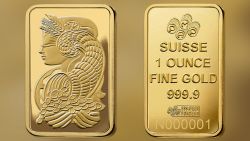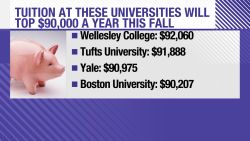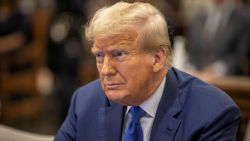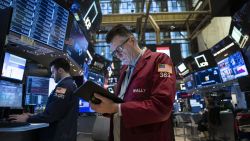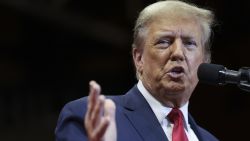Even by the standards of the Tweeter in Chief, President Donald Trump’s missives this morning on markets were weird.
It all started after European Central Bank President Mario Draghi said in a speech thathe was open to boosting monetary stimulus for Europe’s battered economy. European stocks climbed higher in response, while US markets also opened in the green.
But not everybody was happy about it.
6:53 am ET: Trump calls Draghi’s comments unfair to the United States
Trump’s first tweet came just after Draghi’s speech, in which the outgoing central banker said that “additional stimulus will be required” if economic conditions in the eurozone didn’t improve.That could come in the form of interest rate cuts, among other possibilities.
The euro fell in response to Draghi’s remarks. Currencies tend to weaken when interest rates go down, because lower rates make that currency less attractive to foreign investors.
The weakened euro prompted Trump to lash out about its value compared to the US dollar. Draghi said afterward that the ECB wasn’t targeting the euro exchange rate. The dollar by definition strengthens if the euro sells off, since exchange rates move in pairs. This year the euro has dropped 2.5% against the dollar, according to Refinitiv.
According to conventional wisdom, the products of countries with weaker currencies are cheaper and more attractive to buy on the global market. However, this ideaignoresthe integrated nature of supply chains, which muddles this very simplified theory.
7:21 am ET: Trump calls the European stock rally unfair
Companies generally like lower interest rates, which makes borrowing cheaper — so European stocks climbed higher on Draghi’s comment. Trump is right about that. But is it unfair? Hardly.
For one, plenty of US investors are invested in foreign stock markets through their 401Ks, other funds or even directly. So the idea that good economic performance elsewhere takes something away from the United States is confusing.
Trump’s Tuesday remarks can be partly explained by his interest in how financial markets are doing. Stephen Moore, an economic adviser who was once Trump’s pick to join the Federal Reserve, said last month that the president checks markets “every few hours.”
“He understands that if the stock market and economy crash on him, there’s no way he can get re-elected,” Moore said at the SALT conference in Las Vegas.
So while stock market performance is by no means a perfect way to compare different economies or trade balances, Moore’s commentsputwhat happened here in perspective.
9:39 am ET: Trump’s tweet about China sends US markets higher
Trump took a brief break from railing about European markets to tout a development in his relationship with Chinese Premier Xi Jinping. While US markets already started the day in the green, that tweet really sent US markets surging — a rally that Trump didn’t see as unfair, of course.
The Dow (INDU), the S&P 500 (SPX) and the Nasdaq Composite (COMP) all rose more than 1% after Trump tweeted that he recently spoke to Xi. It was a sign that investors are seeing some light at the end of the trade war tunnel.Their hopes are also high that the forthcoming G20 summit in Japan could usher in the next phase of the trade negotiations.
10:09 am ET: Trump turns his attention back to the eurozone
Even with all of the good news for US markets, Trump wasn’t entirely done with Europe. He retweeted a headline from Bloomberg about the possibility that the European Central Bank could cut rates. That tweet appeared to hammer home his earlier point about unfair advantages.
One other thing to keep in mind about Trump’s latest spat: The Federal Reserve is meeting Wednesday. And while the central bank likely won’t change interest rates right now, a rate cut seems far more possible next month.
That could please Trump, who has long been calling for a rate cut as a way to boost the US economy.But it’s also worth pointing out that the US economy right now is much stronger than that of the eurozone.
10:22 am ET: Trump blasts the German stock market rally
As European stocks climbed higher, Trump singled out the Germany’s DAX (DAX) index. At the time of Trump’s tweet, that indexwas up some 2%. Again, Trump said Draghi was to blame.
The DAX wasn’t the only European stock index on a high on Tuesday. But Germany is the biggest exporter in Europe, and the country runs a massive current account surplus because of this – which Trump has criticized previously. Perhaps that explains his attitude towards the DAX.
It’s also worth pointing out that the DAX’s performance is remarkably similar to the United States’ own benchmark, the S&P 500. The DAX is up 16.9% this year, while the S&P has increased 16.6%.







